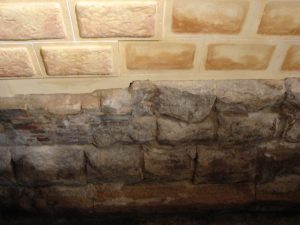 All the towns and villages used as principal settings in the Lady Apollonia West Country Mysteries are ancient, and five of the six sites are of Roman origin. Gloucester, where I have set Memento Mori, the third novel in my Lady Apollonia West Country Mysteries, is no exception. The Romans realised the importance of Gloucester’s location on the River Severn and about 48 AD established a market town there called Glevum. The army built a fortress at Kingsholm, just north of present Gloucester’s city centre, a location near to the most southern fording of the Severn. The Romans built a new fortress at the site of the present city centre around 66 AD and dismantled the one at Kingsholm. Until 74 AD, they saw this new fortress as a possible springboard into Wales, although that role was eventually taken over by a new Roman fortress at Caerleon in Wales from 75 to 300 AD.
All the towns and villages used as principal settings in the Lady Apollonia West Country Mysteries are ancient, and five of the six sites are of Roman origin. Gloucester, where I have set Memento Mori, the third novel in my Lady Apollonia West Country Mysteries, is no exception. The Romans realised the importance of Gloucester’s location on the River Severn and about 48 AD established a market town there called Glevum. The army built a fortress at Kingsholm, just north of present Gloucester’s city centre, a location near to the most southern fording of the Severn. The Romans built a new fortress at the site of the present city centre around 66 AD and dismantled the one at Kingsholm. Until 74 AD, they saw this new fortress as a possible springboard into Wales, although that role was eventually taken over by a new Roman fortress at Caerleon in Wales from 75 to 300 AD.
The Emperor Nerva, in his short reign from 96 to 98 A D, granted to the city that grew around the fortress a charter and the title of Colonia Nervia Gervensis. A colonia was the term for a Roman outpost intended to protect occupied territory. The idea goes back to the 8th century BC, and the first examples of colonia were in what is now Italy. By the 1st century AD, coloniae could be found throughout the Roman Empire from York in the north of England down through Gaul west of the Rhine to Spain and on to North Africa. Further east, they extended south of the Danube on through Greece and beyond. The Roman concept of colonia gave us the modern word for colony.
There are remnants of Roman Glevum in modern Gloucester. The North Gate and the East Gate of Glevum have been excavated. Part of the excavation of the East Gate is now revealed through a clear glass opening in the street at that location. Archaeology has also revealed the location of the Forum and the Basilica as well as several well-to-do Roman residences. The North, East, and South Roman gates and some parts of the Roman wall influenced the position of the gates and walls of medieval Gloucester. Also, the principal streets going in four directions from the Crossing in the modern city centre can be traced back to the Roman time.
The Gloucester City Museum displays a portion of the Roman wall at the base of its west wall as shown in the picture above. This section of the Roman wall was south of the East Gate. The original Roman wall was an earthen wall, but it was rebuilt in stone in the 80’s AD and strengthened in the 290’s AD. This was the version that we can see at the base of the museum wall. A city model in the museum shows where certain important Roman buildings were probably located although their exact positions have not yet been determined.
For more on Roman Gloucester, click on
https://en.wikipedia.org/wiki/Glevum
Tags: Chaucer's England, historical fiction, medieval mysteries